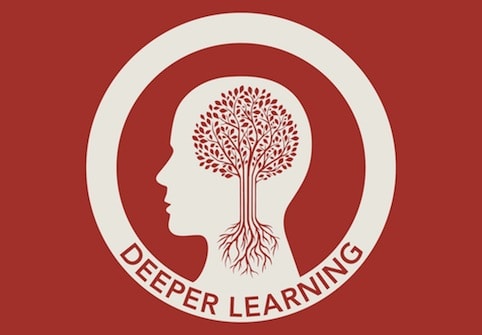Deeper Learning: Not Just for Suburban Students

It is easy for schools that serve high challenge communities to be preoccupied with remediation. With the growth of double blocked core subjects and managed instruction programs it is easy to assume that engaging projects and what might be called enrichment activities only happen in suburban schools. But we checked around this summer and found dozens (and evidence of hundreds) of schools serving low income students coast to coast that don’t default to a thin test prep curriculum.
Better by design. High Tech High Chula Vista sixth grade humanities teacher Andrea Morton has many students arriving with below-grade-level academic skills and most dealing with the extra-curricular stresses of poverty. Rather than a rote scripted approach, the curriculum, created by the faculty, is based on the High Tech High Design Principles of common intellectual mission, adult world connection, and personalization.
“Because we are dedicated to providing a personalized environment for our students, we are constantly finding new ways to change/individualize how we teach. We aim to scaffold our projects and provide multiple entry points for all students, leading toward quality products and outcomes in which the content is fully understood,” said Morton.
Modeled after the original High Tech High, the Chula Vista middle school site is 25 miles southeast and serves a higher need population. Teachers constantly monitor student performance and quickly modify instructional strategies. Morton said, “If a student doesn’t understand a concept, teachers will offer one-on-one tutoring to ensure they do; a tutoring center is also available after-school.
Morton noted that students often have the opportunity to work with local experts and other community members as they “develop their critical thinking, critique, and presentation skills.” In the process, they “create beautiful, relevant work to share in the ‘real world.’
Big goals. When the Springfield Renaissance School opened in 2006, there were few options available within the central Massachusetts district for students who wanted a rigorous college preparatory education. Some people thought that the largely poor and minority student population simply wasn’t interested in or capable of engaging in a rigorous college preparatory experience. They were wrong. One hundred percent of its first four graduating classes were accepted into college and 78% of them matriculated, compared to 30% in local schools. Students know from sixth grade on that they are on the path to college. School-led visits to college campuses begin in sixth grade and continue throughout high school.
The entire curriculum is “centered upon issues, problems, and challenges that either face our society now or have lessons applicable to modern times,” said principal Stephen Mahoney. “Guiding questions are open-ended and push students to search for evidence, form and articulate opinions and positions, put together recommendations or conclusions, and then defend those results in a public setting.”
Real work. Mansoureh Tehrani, director of METSA New Tech, said, “Our mission ensures that students are strategically prepared for the rigor and self-discipline of college and the innovative demands of STEM career pathways,” despite the fact that more than 70% of the Carrollton, Texas students live in or near poverty.
METSA, a member of the New Tech Network, engages students on big topics like global health, requires students to defend their learning to business leaders, and supports internships. “Our students demonstrate their scientific and technological competencies requisite for global competitiveness in our knowledge-based economy,” said Tehrani.
A capstone service projects culminates the METSA experience. Students have built water filtration systems for developing countries, a hydroponic garden shared for the local community, and a garden for a local animal shelter. They hosted an engineering camp for 250 local elementary students.
At MetEast in Campden students demonstrate a mastery of core academic content through quarterly exhibitions. “Every one of our students make an oral presentation that highlights everything they have accomplished through the previous marking period in each academic area,” said Principal Jenkins.
These four schools were purpose built to bring high expectations to high challenge communities. They don’t rely on a scripted approach–they engage students in authentic work and demand quality work products. As discussed last week, they develop a high-capacity student support system designed to address the volume and diversity of student needs in a high-poverty setting.
Deeper learning is not just for the suburbs–students in low income communities deserve powerful experiences too. Over the next week, we’ll take on a few more myths about deeper learning.








0 Comments
Leave a Comment
Your email address will not be published. All fields are required.